Beyaz Gül Galata Kulesi
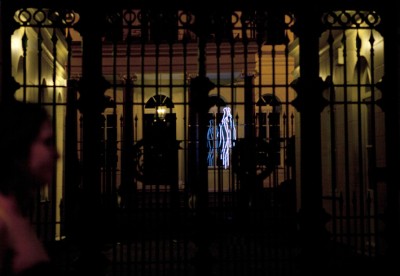
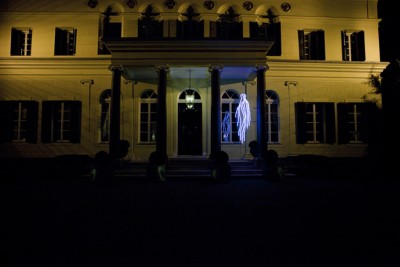
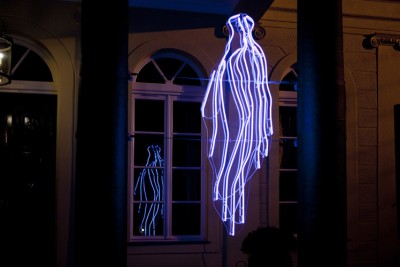
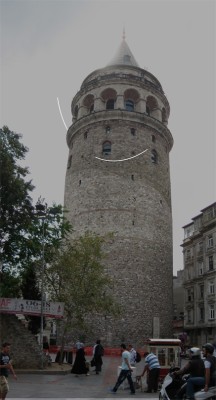
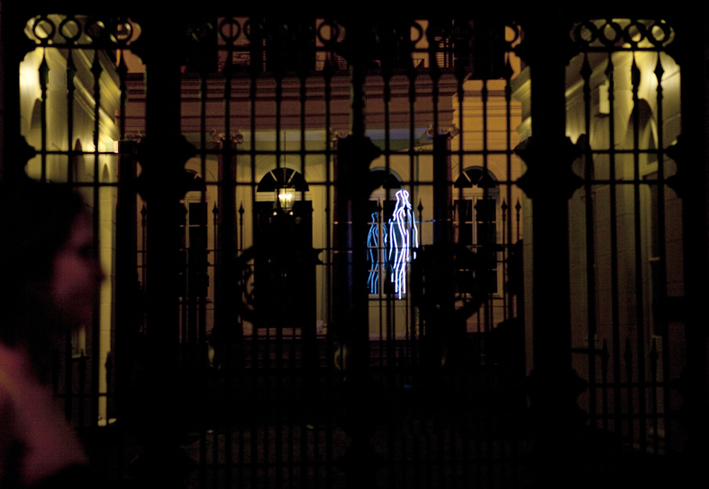
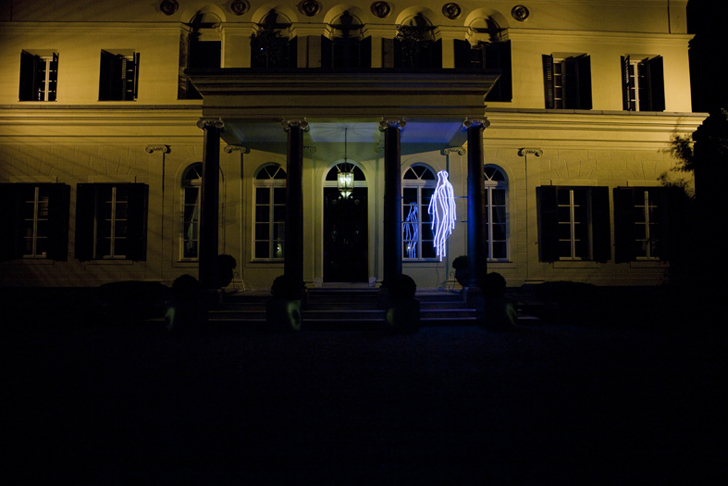
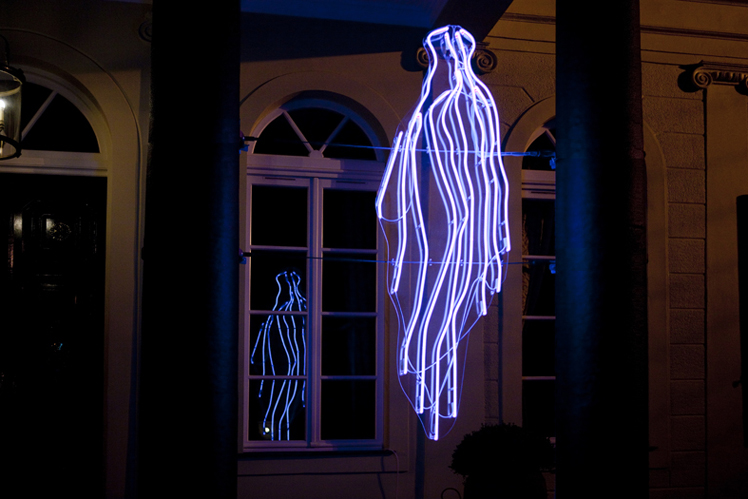
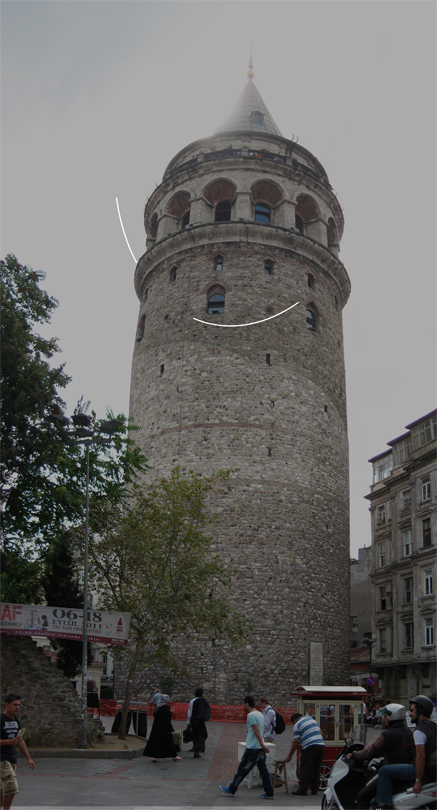
Beyaz Gül Galata Kulesi
Specs: The work of Beyaz Gül at the Consulat is a 250 cm high shade composed of drawn light lines made of clear glass with blue gas within. The work is floating on steel wires between two pillars on the forecourt of the consulate. The light movements are controlled by a computer. From afar, the shadow is blue, close whitish. If no lights are on, you look right through. The Thorn of a rose at the Galata tower (sketch) is a curved, white light line made of neon.
Beyaz Gül (White Rose)
Titia Ex was - separately - approached by two principals from Istanbul to design a light sculpture, one invitation came from Beyoğlu district of Istanbul and the other from the Dutch Consulate. She linked the two questions to the story of Beyaz Gül, the Turkish mistress of the Dutch ambassador Cornelis Calkoen (1727-1744).
The story goes that she was left with a broken heart after Calkoen was transferred to Dresden, and since then she haunts the Consulate. Old residents, but also current residents, hear unexplained sounds and feel an indefinable presence. This story was the inspiration for both works.
Floating image by drawn light lines
At the Dutch Consulate the work visualizes the legend of Beyaz Gül as a 250 cm high shade composed of 'light lines drawn' made of clear glass with bright blue gas within. The light moves gently back and forth. From afar, the shadow is blue, close it is whitish. If no lights are on, you look right through. The image of Gül is floating, suspended on steel wires between two pillars on the forecourt of the consulate, visible from the busiest shopping street.
A thorn of a rose in Galata tower
This homage to Beyaz Gül (White Rose in Turkish), with her captive heart and persistence faith, embodies in the robust Galata tower with its glorious past. On the trans of this tower is a curved, white light line that seems to be running through the tower. A thin broken line curve that expresses an observation post, a searchlight, a mysterious presence. Which, like a piercing, or the thorn of a rose, is inserted through the velvety skin.
Beyaz Gül (Witte Roos)
Titia Ex werd los van elkaar door deelgemeente Beyoğlu Istanbul en het Nederlands Consulaat benaderd om een lichtkunstwerk te ontwerpen. Zij heeft beide vragen aan elkaar gekoppeld in het verhaal van Beyaz Gül (Witte Roos), de Turkse minnares van de Nederlandse ambassadeur Cornelis Calkoen (1727-1744).
Het verhaal gaat dat ze met een gebroken hart is achtergebleven nadat Calkoen was overgeplaatst naar Dresden en sindsdien rondwaart door het Consulaat. Oud bewoners, maar ook huidige bewoners, horen onverklaarbare geluiden en hebben het gevoel van een onbestemde aanwezigheid. Dit verhaal werd de inspiratiebron voor de beide kunstwerken.
Vloeibare lichtlijnen
Bij het Consulaat visualiseert het kunstwerk de legende Beyaz Gül in een 250 cm hoge schim opgebouwd uit getekende lichtlijnen. De lijnen zijn gemaakt van helder blank glas met blauw gas erin. Het licht beweegt zachtjes heen en weer. Van veraf gezien is de schim blauw, van dichtbij wittig. Wanneer er geen licht brandt, kijk je er dwars doorheen. Het werk zweeft tussen twee pilaren op het voorplein van het Consulaat, zichtbaar vanaf de drukste winkelstraat van de stad.
Een rozendoorn in de Galata toren
Deze hommage aan Beyaz Gül, met haar gevangen hart en standvastige trouw, is belichaamd in de robuuste Galata toren (schets) met zijn roemrijke verleden. Op de trans van deze toren is een gekromde, witte lichtlijn aangebracht die dwars door de toren heen schijnt te lopen. Een ijle onderbroken booglijn die een uitkijkpost, een zoeklicht, een geheimzinnige aanwezigheid uitdrukt. Die net als een piercing, of de doorn van een roos, dwars door de fluweelzachte huid is gestoken.
Uitgezonden door AVRO KunstUur De Turkse Tulp